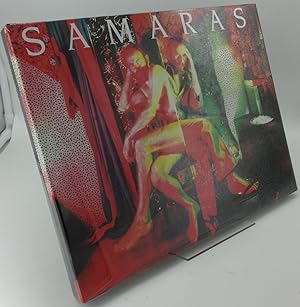Photographer, painter, sculptor, Lucas Samaras is one of the most influential and provocative artists of our time. Once again available to readers, this long out-of-print volume presents a thorough compilation of Samara's photographic work, beginning with his earliest "Auto-Polaroids."
This exhaustive body of work paved the way for a generation of contemporary photo-artists, expanding the expressive possibilities of the medium. Using Polaroid materials, large--sometimes life-sized--formats, manipulated imagery, and composites, Samaras helped forge a vocabulary employed by artists and photographers throughout the eighties. In his most profound achievement, he adopted one of photography's basic genres--portraiture--and used it as a basis for an inquiry into the self, which remains unmatched in its intensity and boundless in its ramifications.
Photography critic Ben Lifson provides a trenchant critique and history of Samaras's work. "Samaras split himself into model, actor, director, audience, and critic," Lifson writes. "To each of these roles he brought a skilled artist's hand an an eye deeply informed by the historical traditions and motifs of art and by the vernacular and popular traditions of photography. He became a rare figure in American art, not an artist who occasionally uses photography for tactical reasons . . . but an artist who made photography central to his aesthetic campaign."
Photographer, sculptor, painter, and performance artist, Lucas Samaras is one of the most influential and provocative artists of all time. In 1973, Samaras discovered that the wet dyes of Polaroid prints were highly malleable, allowing him to create what he calls "Photo-Transformations." His work has been exhibited widely at such institutions as the Whitney Museum of American Art and the Museum of Contemporary Art, Chicago and is held in major museum collections around the world.
Ben Lifson is a writer, critic, and photographer. His articles have appeared in many periodicals including Art in America, The Village Voice, Artforum, and Aperture. He is represented in the collections of the International Museum of Photography, George Eastman House, the National Museum of American Art, and the Minneapolis Art Institute.
